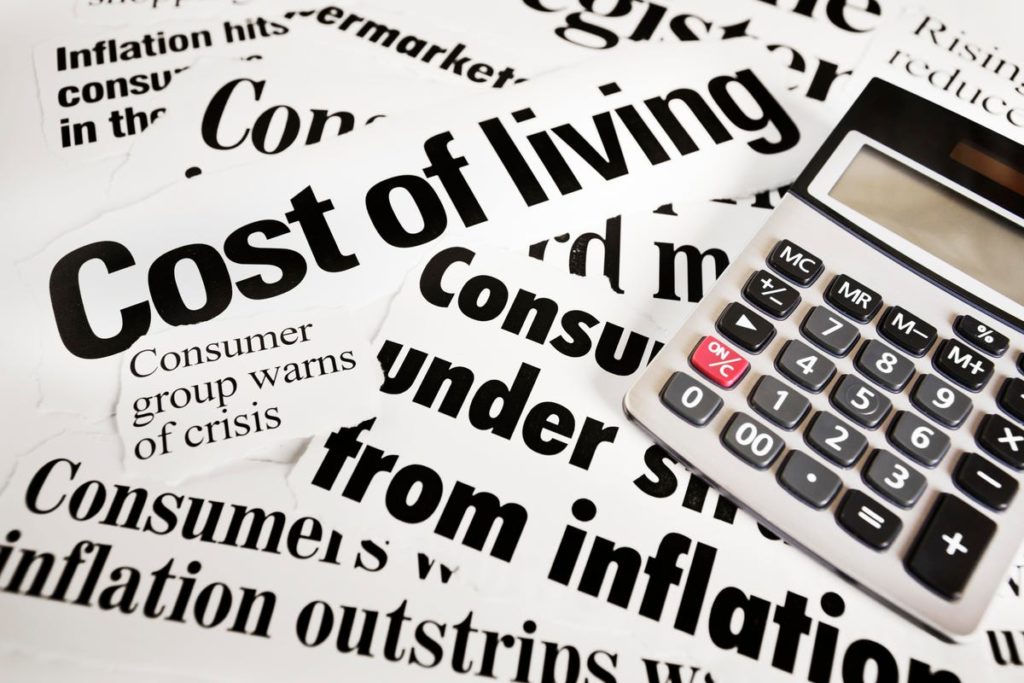In a recent report written by Sarah Ewall-Wice of CBS News, stated that inflation has soared 8.5% over the past year, the fastest annual pace of price increases since 1981. With recent record increases in the price of fuel and gasoline (50%) and the resulting increase in the cost of food (10%) and the disruption in the world’s supply chain, several studies suggest it is driving up costs disproportionately to small businesses who have particularly been feeling the squeeze. 80% of small-business owners say their business’ financial health has suffered due to inflation over the past six months, a new Goldman Sachs 10,000 Small Businesses Voices survey found. Of those, 67% have increased wages to retain employees, and 61% have increased wages to attract new employees.
Large and particularly small businesses in turn, pass these increases unto the customer, which will inevitably result in decreases in sales as customer demand is negatively affected by rising prices. Layer onto dramatic increases in the price of fuel, commodities and raw materials, the Federal Reserve is increasing interest rates to slow inflation at a time that rising prices will naturally slow consumer demand.
The challenges are threefold:
- How to retain your existing customers while increasing your prices to them
- How can you soften the blow to your customers during this time of rapidly increasing prices and interest rates
- How to increase your business with your existing customers and gain new customers
5 Strategies to Address Inflation and Rising Prices
1. Customer Costs
If your customer is another business which is likely incurring debt to finance their business, a strategy that will help the customer deal with rising costs and position your company to acquire new business is changing your credit terms eg. expanding your “net due” to 30 days from 21.
This strategy will help reduce your customer borrowing costs but more importantly, your company might be able to expand your business by letting your customers know (and potential customers) that you understand their “pain” and are working to help them in this time of rising inflation. Of course, you should only extend terms if you are in a position to do so without negatively affecting your business.
Of course, one of the most significant costs affecting your business is rising labor costs. Are your rising costs a factor of the lack of labor supply or labor inefficiency, partially due to the work at home trend. Some companies are finding that productively has declined while others might have found the opposite. What are your labor needs, and are their inefficiencies that can be corrected so that your labor force is more productive? Are you carrying too many people at too high of a cost? Are their ways to reduce your operating costs that will help to being down your customer’s costs.
2. Adopt a Customer First Philosophy
Personal service sells and retains customers. While technology and remote call centers work, in times of price squeezes and increasing inflation, customer retention might come down to controlling or at least rationalizing rising prices and personal service. Consider moving from the call center concept now and move to personal representatives to customers and world class customer responsiveness. It is easy to lose customers during rising prices through poaching by competitors who are not increasing their prices as rapidly as your company.
3. Brand
Our firm has a client that is the leader in its field. For customers, they are the go-to company for materials. Their brand is that a customer can get almost immediate delivery of materials and on terms that are highly favorable. The ability to provide favorable terms and almost immediate delivery involve significant financing. But with delays in deliveries due to supply chain issues, this might be the time to incur debt to build inventories if you can so that you can deliver goods to your customer faster than your competitor. Establishing a brand of quick customer response and financial flexibility might during a time of rising prices might help establish your brand in the marketplace. Of course, the danger is a coming recession where you might be over inventoried and have obsolete inventory as demand decreases, so just take care. It might be a good bet to increase your marketing expense to communicate your brand to gain more customers from competitors who might be pulling back on marketing.
4. Understand your Customer Base
What are their spending habits? Can you offer them a less expensive product that might fulfill their needs? Are their promotions that you can offer them to keep them as customers and perhaps attract new ones? Are their price tiers your company should consider, attracting more sales?
5. Communication
Likely, all your customer knows about the pricing of your product is the price. How you communicate your pricing is important. As an example, if you company is losing money or has a low margin on products, while you might not want to share all your financial information, it might be advisable to inform your customer on your margins and how you develop the end pricing to the customer. Share what you know about your competitors pricing, trends in product pricing (eg. raw materials such as commodities appear to be rising faster than other materials so you, the customer, can expect more significant increases in certain types of products. Share information with them and consider them a partner with you in times of inflation and rising prices.
Inflation brings challenges to all companies but there are some opportunities to increase your market share. Although it would appear that “prices are going through the roof,” keep in mind that inflation over the last decade has been very low and in part, the current rise in prices reflects a bit of a make up for the lower inflation of the past and current external events that are hopefully short lived will end in the near future (semiconductor shortages, Ukraine war, Russian fuel embargo). Position your company to keep your customer and build your business.

